Key points:
- Exports to China show strong signs of recovery, up 30% on last month.
- Japan maintains its place as the top destination for Australian beef exports in April.
- COVID-19 impacts red meat consumption during Ramadan season.
Total beef exports in April dropped 2% to 92,500 tonnes swt compared to the previous month while sheepmeat exports declined by 15%, reaching 32,718 tonnes swt, modest volumes considering the arrival of the Ramadan festive season.
China's demand for Australian red meat surges as the country gradually regains normality
Since late March, China has eased COVID-19 social distancing restrictions with businesses including restaurants beginning to resume operations. Red meat, particularly beef remains a salient protein that many Chinese consumers look for during the outbreak of COVID-19 due to its perceived health benefits such as supporting overall health and boosting immunity. MLA's recent research on the impact of COVID-19 on Chinese consumers revealed that the market has seen stronger demand for Australian beef through the home isolation period.
Strong consumer preference for Australian red meat, coupled with easing restrictions underpinned sharp growth in red meat exports to China in April. Beef shipments lifted 30%, reaching 24,000 tonnes swt, a record high since December last year. Lamb exports to China remained steady with shipments in April increasing 2% to 7,000onnes swt while mutton showed strong signs of recovery, lifting to 4,600 tonnes swt from 3,300 tonnes swt in March. The market is also seeing a steady growth in chilled grain-fed beef exports albeit its modest share of 10% out of total export volume.
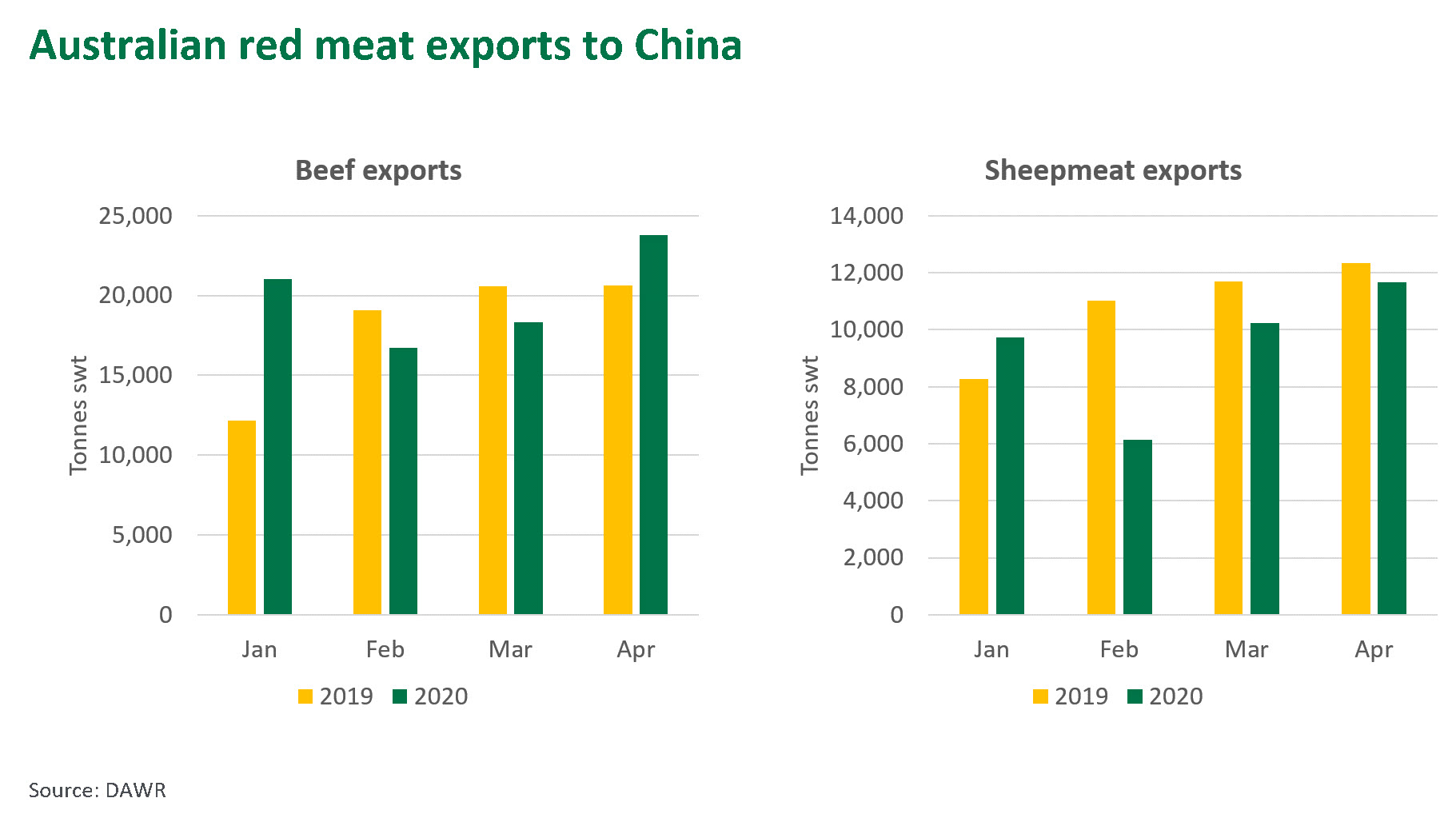
Downturn in US foodservice industry affecting Australian export mix
Manufacturing trim, which accounts for more than 50% of total beef exports to the US, is back 19% on 2019 for the year-to-April. The US foodservice sector has been hit hard by COVID-19 restrictive regulations, and given the important role that Australian manufacturing beef plays within that market, exports will likely remain behind year ago levels as the pandemic continues.
However, shipments of premium cuts, particularly striploin, tenderloin and cube roll/rib eye roll, have found some growth into the US market this year. Total loin cuts shipped to the US have grown 25% to 3,804 tonnes swt for the year-to-April period; demand through retail channels undoubtedly improving as consumers look to spend more time at home cooking.
COVID-19 measures impact Ramadan celebrations around the world
Ramadan commenced on the 24th of April and will run through to the 23th of May, however, millions of Muslims around the world are celebrating one of their most-awaited events in quiet this year due to COVID-19. Red meat exports typically spikes during the Ramadan period, yet demand this year is likely to be impacted as restrictions, especially on social gatherings, are being imposed in most countries.
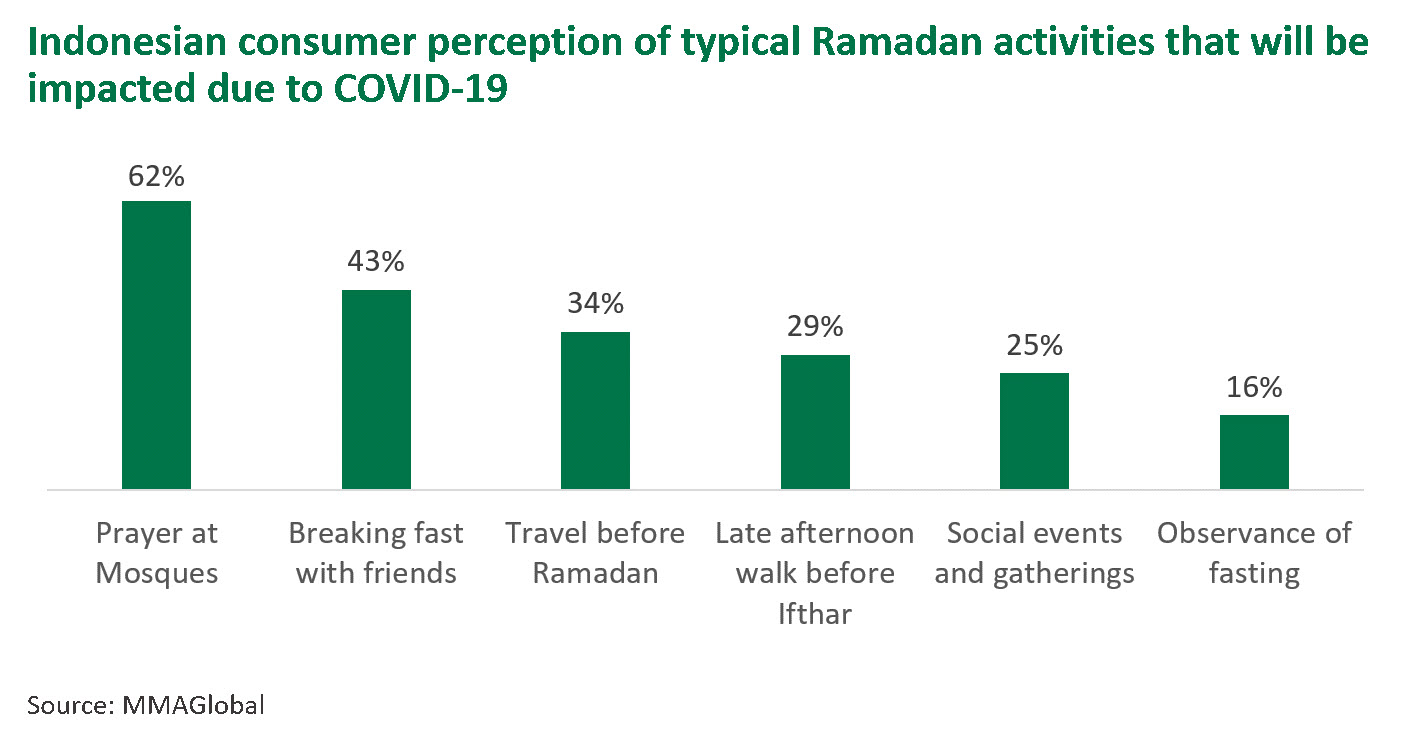
Australian beef exports to Indonesia in March and April (preparation period, typically two months prior to the arrival of Ramadan) were back 10% compared to the preparation period last year. Likewise, beef exports to MENA declined 12% while sheepmeat dropped 20%. Sheepmeat exports Malaysia also shares similar trend with lamb back 39% and mutton down 50%.
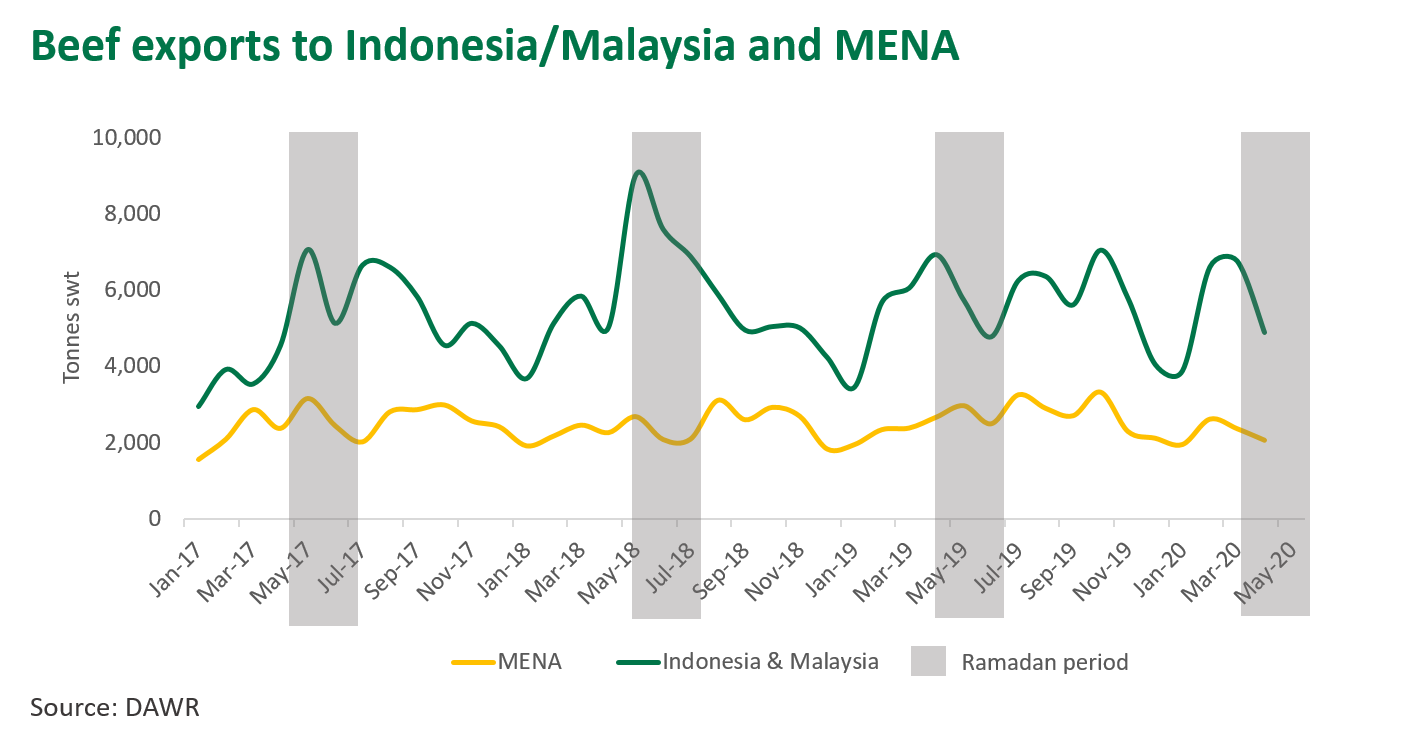
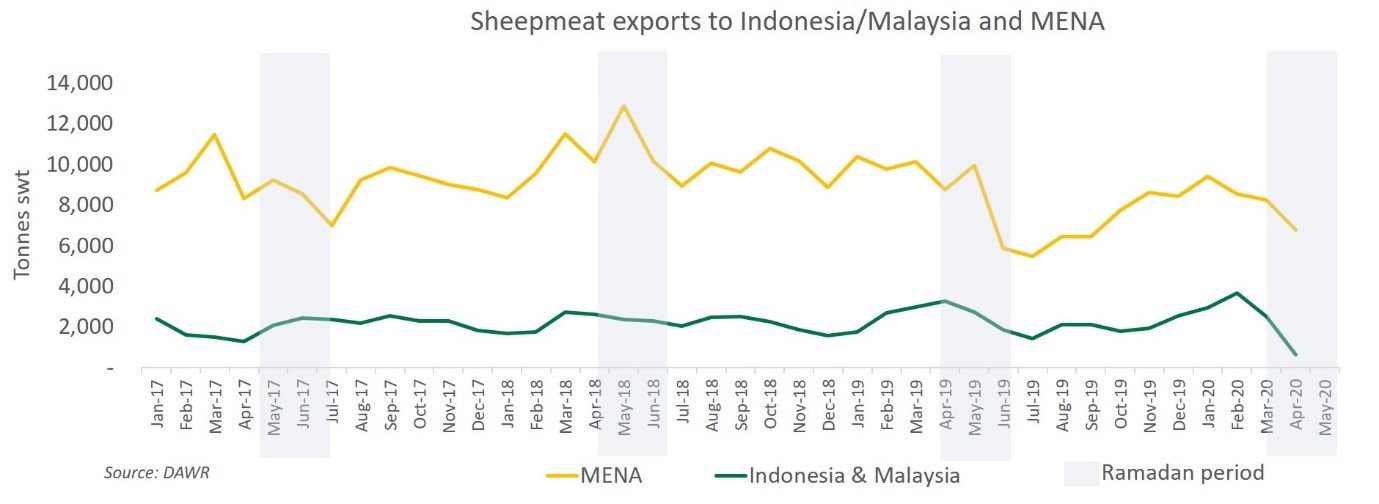
April red meat export statistics
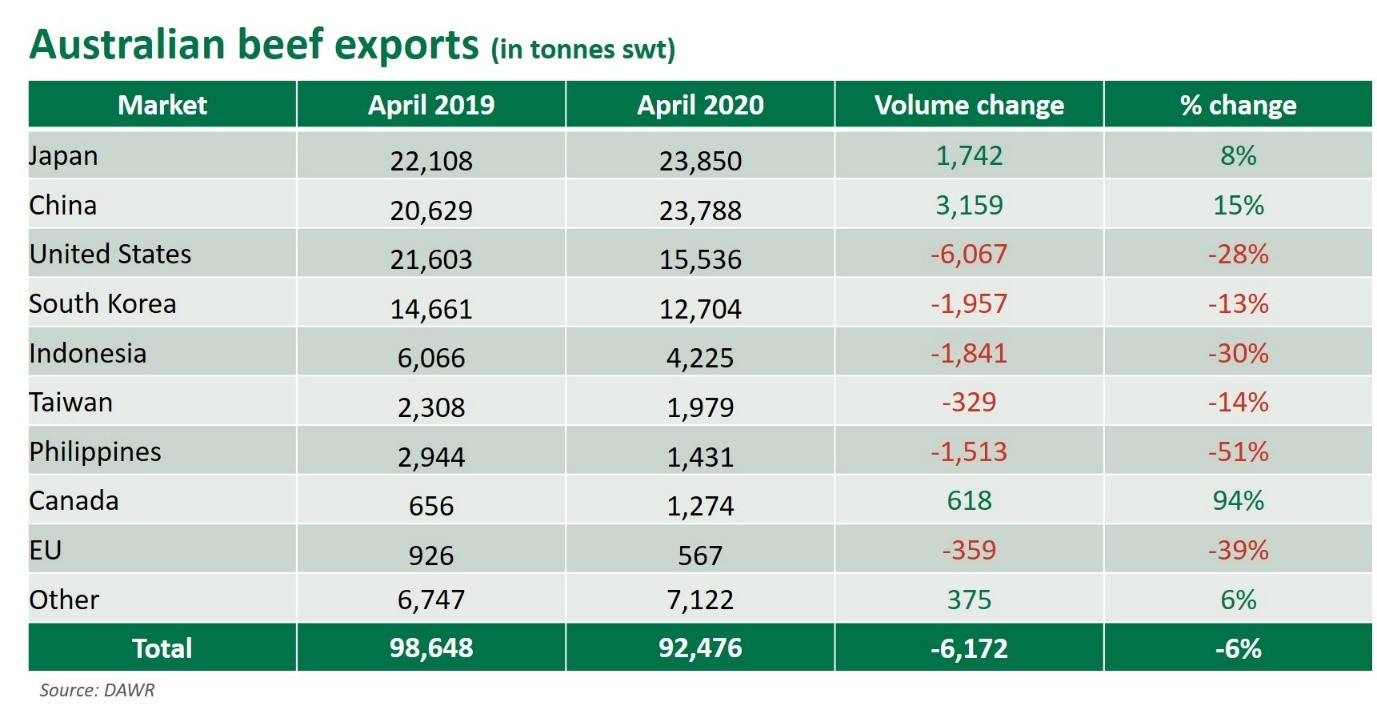
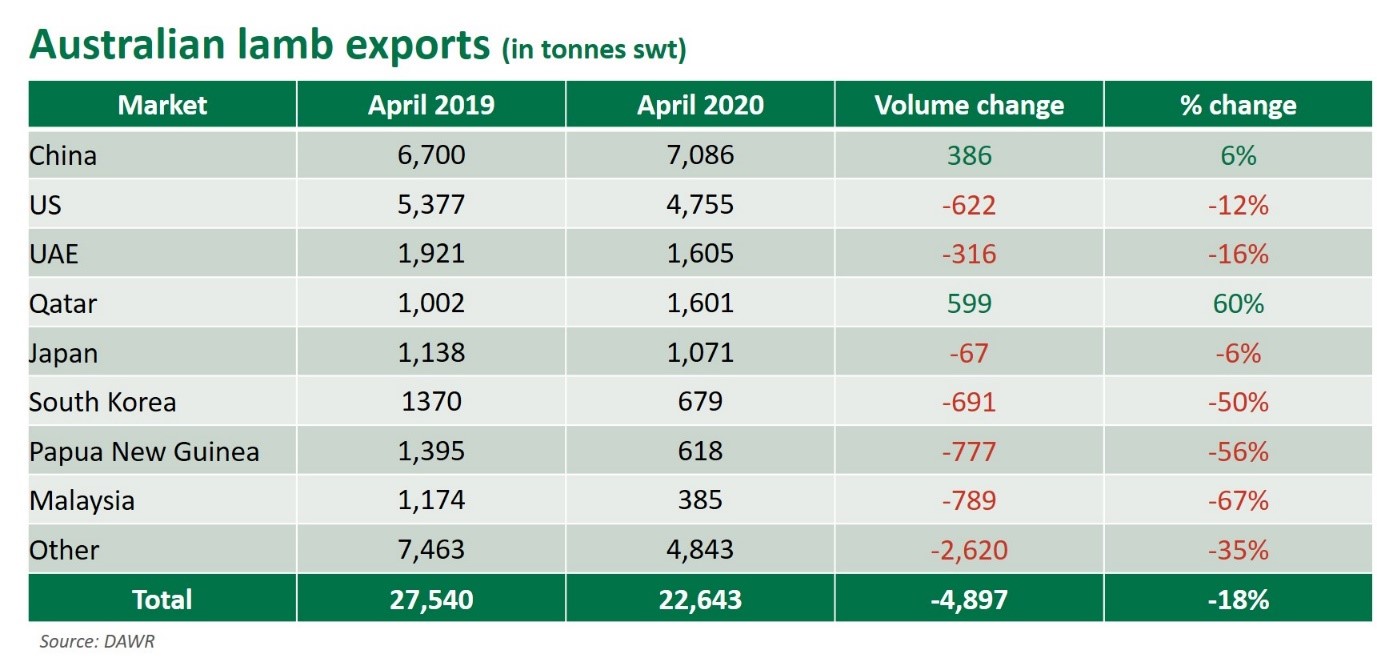
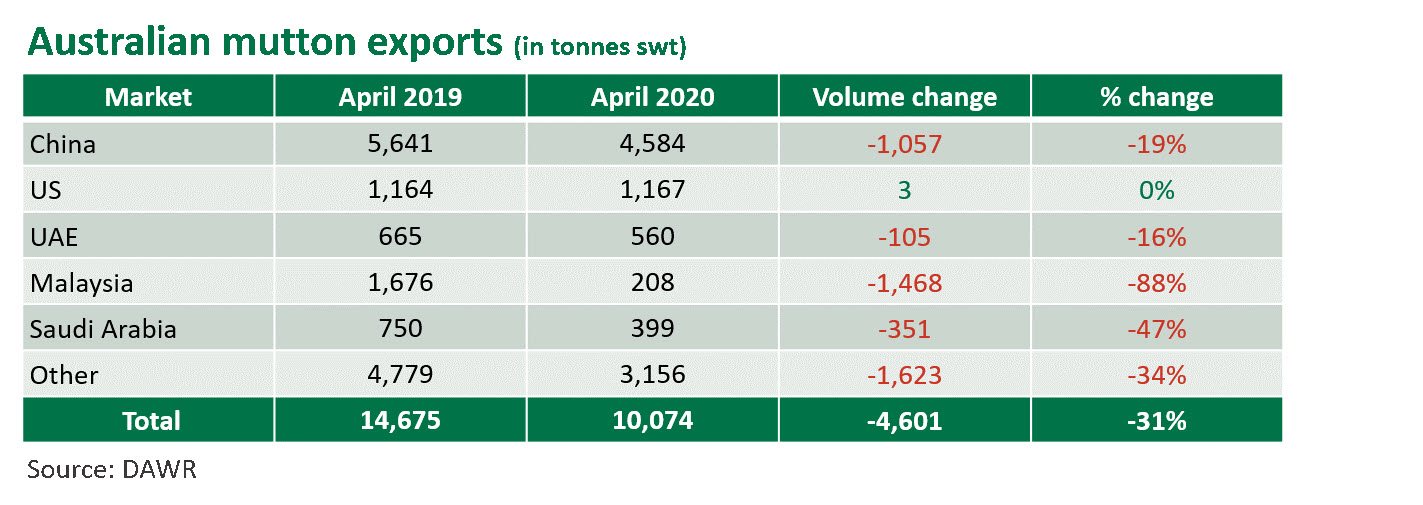
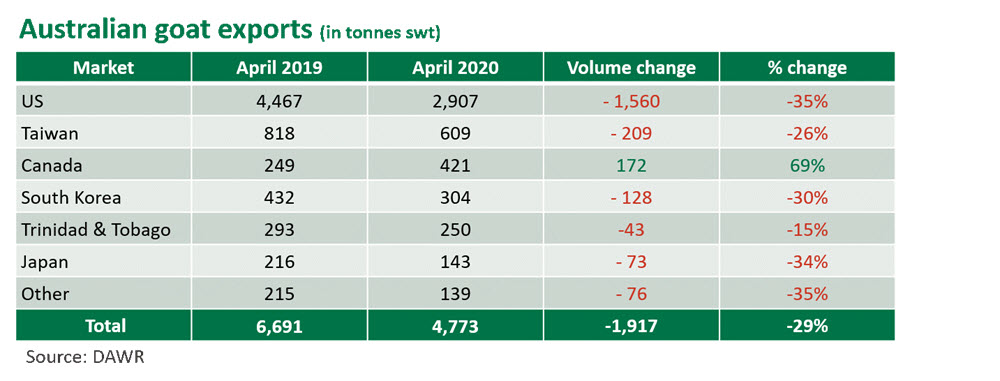
© Meat & Livestock Australia Limited, 2020
To build your own custom report with MLA's market information tool click here.
To view the specification of the indicators reported by MLA's National Livestock Reporting Service click here.






